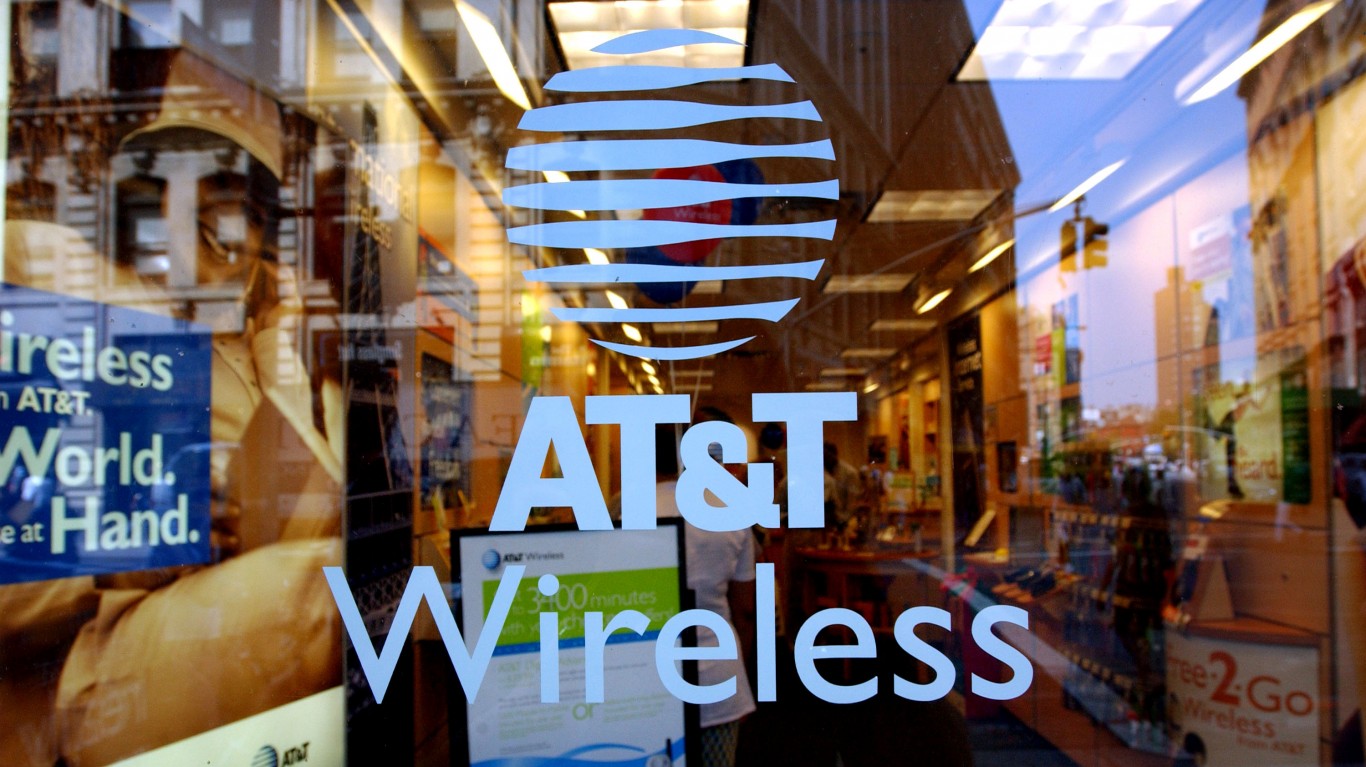
After ending 2023 on a high note, despite challenging conditions, all major U.S. indices are setting the stage for what is likely to become yet another banner year for investors as the bull market continues to trek beyond the midpoint of 2024.
Though there are still plenty of risks, and with the U.S. elections still on the books for the year, investors remain hopeful that a layering strategy could help them navigate unsuspecting conditions, as bullish sentiment for the technology sector helps to drive indices towards stratospheric levels.
Need to Know News
- The explosive adoption of Artificial Intelligence (AI) and Machine Learning (ML) applications has created a bullish atmosphere in the market, driving major U.S. indices higher
- The S&P 500 has climbed 14.66% year-to-date, with the tech-focused Nasdaq booking a 20.23% return, showcasing strong performance in 2024.
- If you’re looking for the next big winners, you absolutely need to grab a copy of our brand-new “The Next NVIDIA” report. It discusses the push from AI clusters with thousands of GPUs to more than a million and the kinds of stocks that could become massive winners in this next shift in the AI space.
Dynamic economic conditions, coupled with changing consumer behavior are helping shape investment themes for the remainder of the year. The explosive adoption of Artificial Intelligence (AI) and Machine Learning (ML) applications has created a bullish atmosphere on the market for investors as they continue to ride out the hype.
Since the turn of the year, the S&P 500 has climbed a robust 14.66% with an overall improvement of just over 42% since the beginning of 2023. Technology stocks on the S&P have collectively grown their earnings by 23% over last year in their first quarter.
On top of this, the annualized rate of return for the S&P is now standing at 26%, which experts note is nearly triple the index’s average annual gain over time.
Similarly, the tech-focused Nasdaq has managed to outpace all major indices, booking a 20.23% year-to-date return. Economists have commented that previous performances have shown that companies typically perform slower during the first quarter, but the market remains buoyant on the back of retailers’ holiday season sales.
Impressively, the Dow Jones Industrial Average stands in a similar position. However, the index had shrugged off previous declines, regaining 3.77% since the start of 2024, and up an impressive 15.97% over the last 12 months.
Big and Beautiful Blue-Chip Behemoths
For investors, blue chip stocks are regularly an option that provides them with long-term safety and strong returns. Though not all blue chip companies pay dividends, those that do have given investors attractive returns, and have managed to outlive numerous economic cycles. (Here are seven blue chip stocks that continue to raise dividends.)
Seeing as many blue chip companies tend to be market, if not industry leaders, experts often find that these stocks tend to see slower-than-usual growth, but instead expose investors to more mature securities that can drive long-term stability during tumultuous economic cycles and market downturns.
In a fast-moving market, uncovering undervalued blue chip stocks may often feel like searching for a needle in a haystack. Fortunately, in those moments that investors do come across blue chip behemoths that offer promising returns and sustainable performance, the outcomes may result in the feeling of hitting the jackpot without putting too much risk on their plate.
Here are five blue chip stocks that investors may consider adding to their portfolio that will likely see another blowout performance year.
AT&T

AT&T (NYSE: T) is a market leader that’s been in business since 1987 and has held strong despite droves of new competitors entering the market. Though the hay-day of early cell phone mania had somewhat waned over the years, strategic diversification has ensured the company remains a relevant, and key player in the telecommunications industry
The delivery of 5G networks across much of the U.S. and other parts of the world has placed AT&T ahead of the curve, enabling them to fully leverage their position in the market, and further add on their existing infrastructure to service more customers and seek to deliver more encouraging product and service offerings.
The first quarter performance came in stronger than expected, with the company raising more than $16 billion in mobility service revenues, an increase of 3.3% year over year, and seeing its 17th quarter of AT&T fiber net additions of 200,000+ net adds. Current forward-looking predictions by the company see them growing wireless service revenues by 3%, while broadband revenue increases by 7%.
Furthermore, the company expects additional capital invested in the $21-$22 billion range will bolster further service delivery, while free cash flow in the $17-$18 billion range will give the company enough financial leverage to deliver adjusted earnings per share (EPS) growth.
Though Q1 2024 revenue of $30.0 billion is down by 0.4% compared to $30.1 billion for the same period last year, AT&T saw slower growth in mobility equipment which was largely due to lower sales volumes, and lower business wireline revenues. Stocks have improved more than 16% from its low point of the year, and have increased more than 8% since the turn of the year. With a 5.93% dividend yield, and stocks priced below $20.00 per share, AT&T is a blue chip beauty that holds valuable long-term opportunities.
Chevron Corporation

The oil and gas exploration company Chevron (NYSE: CVX) has seen stock prices slightly rebound following the softening of oil prices earlier in the year as growing geopolitical tension in the Middle East continues to escalate. Though CVX is 6.10% down from its former peak, the company remains an attractive blue chip option that currently delivers a 4.17% dividend yield.
For nearly 20 years Chevron has been raising its cash dividend. A total pay-to-earnings (P/E) ratio of 14.37 provides investors with a strong incentive for the company to bolster its position in the coming years despite the plethora of environmental, social, and governance (ESG) policies casting a somewhat negative light on the gas and oil exploration sector.
Nonetheless, Chevron holds a valuable position in the market, as is considered a key player in the fossil fuel industry. In Q1 2024 the company delivered strong global performance, seeing a 12% improvement in total production compared to last year. On top of this, new and ongoing project targets have been achieved in some of its largest production regions, including Kazakhstan, the United States, and the East Mediterranean.
In total, U.S. oil production has soared by 35% during the first quarter as conditions in the commodities market remained somewhat turbulent. Despite the improved production, overall quarterly revenue of $5.5 billion is a decline from $6.6 billion in the same period last year. However, the company claims that changes in foreign currency played an important role in this quarter’s performance, which had increased earnings by $85 million due to favorable foreign exchange conditions.
Though global consumers continue to seek cleaner and greener fossil fuel alternatives, Chevron remains focused on its ability to deliver shareholders with stability and strong capital returns. The ongoing investment in new exploration projects, and improvement of both onshore and offshore drilling facilities in the U.S., coupled with sustainable earnings is helping CVX regain its footing on the stock market as prices continue to see improvement against the backdrop of a softening commodities market.
Procter & Gamble

For more than 175 years, the consumer goods company, Procter & Gamble (NYSE: PG) has been delivering non-stop service and product quality to consumers across the world. Part of their long legacy includes 134 consecutive years of paying dividends, with 67 years of consecutive dividend hikes throughout their long history.
As a dividend aristocrat, Procter & Gamble stock remains somewhat undervalued at a current year range of $141.45 – $169.41 per share. In addition to this, their current dividend yield of 2.40% remains somewhat below their nearest competitors, which could be due to the limited growth prospects for stock performance seeing as P&G has been around for more than a century.
Nonetheless, this year has been full of ups and downs for the company’s stock, however, more upward trajectory has been recorded as P&G has managed to surpass Wall Street expectations during their two recent quarterly results.
For Q3 2024 the company reported a one percent increase in organic sales, which were up from $20.1 billion in Q3 2023 to $20.2 in Q3 2024. More than this, the company reported positive improvements due to favorable foreign exchange earnings and acquisitions and divestitures which rose 3% during the recorded period.
In total, the company reported $4.1 billion in available free cash flow, and despite seeing organic sales improve by lower-than-expected margins, even as strategic price increases help drive better cash flow, there has been an overall improvement in adjusted free cash flow productivity of 87%.
During the third quarter, the company declared a dividend increase, marking the 68th consecutive year of increased dividend delivery. For the year ahead the company maintains a sales guidance of between 2% and 4%, however changing foreign exchange rate conditions could lower sales projections between 1% and 2%.
Procter & Gamble is a blue chip beauty that holds a sort of special place for investors, as a company that not only pays attractive dividends but offers shareholders exposure to wider capital markets as diverse product and service offerings remain a key focus for the company.
Verizon Communications Inc.

Verizon (NYSE: VZ) is a multinational communications and technology conglomerate operating in over 150 countries around the world and currently services 99 percent of Fortune 500 companies.
Similar to other companies on our list, Verizon is an attractive blue chip option for investors who are looking for sustainable long-term growth companies that can pay dividends, and offer attractive returns over the near term.
Verizon started the year on a positive note, seeing slight improvements across the board, including 0.2% year-over-year growth in revenue. For the recorded period, the company reported $33.0 billion in revenue, with $12.1 billion in adjusted EBITDA which was a 1.4% improvement compared to the same period last year.
Other remarks include a decline in cash flow from operations which was $7.1 billion in Q1 2024 compared to $8.1 billion for Q1 2023. Despite the decline, their operating metrics show that the company added 389,000 new broadband subscribers and 53,000 Fios internet additions. In total, the company now has more than 144 million wireless retail connections.
The strong customer gains during the year have played in the company’s favor, seeing an overall improvement in stock performance including 5.65% year-to-date growth, and overall sustainable growth during the last three months with stocks only down 4% from its earlier peak in the year.
Similar to other providers, Verizon has an attractive dividend payout, with a current dividend yield of 6.48%.
Walmart Inc.

Then there’s Walmart (NYSE: WMT), an all-American company that offers stability throughout various business and economic cycles. For investors, WMT is a consumer discretionary pick that can often be categorized as a defensive stock seeing the company provides a service that continues to be in demand regardless of current economic conditions.
Even as prices begin to stabilize following a cool down in overall U.S. inflation during recent months, Walmart reported a 6% jump in revenue, with operating income improving 9.6% during the first quarter.
A strong gain for the company has been its online stores, which have seen gradual growth across all sectors and operating regions. For the quarter, Walmart reported a 21% growth in e-commerce sales globally, which was mostly led by store-fulfilled pickup and deliveries.
A sore spot for the company is its $50 billion debt. More than this, in Q1 2024 there was a decrease of $1.6 billion in inventory levels, which ended the quarter at $55.4 billion. On top of this, operating cash flow was down $400 million to $4.2 billion.
Nonetheless, the current economic cycle has been a promising one for Walmart as stock prices have soared by more than 28% since the turn of the year. Halfway through May, share prices jumped by 6.93%, and for the summer season, WMT is up by an average of 14%.
Walmart is a safe bet for investors purely as it provides them with flexibility, and despite the current economic conditions, consumers will continue to support the company. Though customers have been pulling their purse strings tighter in recent years as the cost of living climbed steadily, Walmart held a core position to benefit from rising consumer prices, despite an overall slowdown in consumer spending.
Thank you for reading! Have some feedback for us?
Contact the 24/7 Wall St. editorial team.





